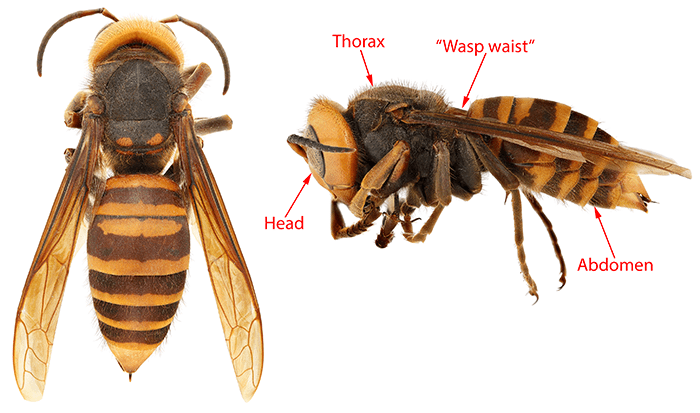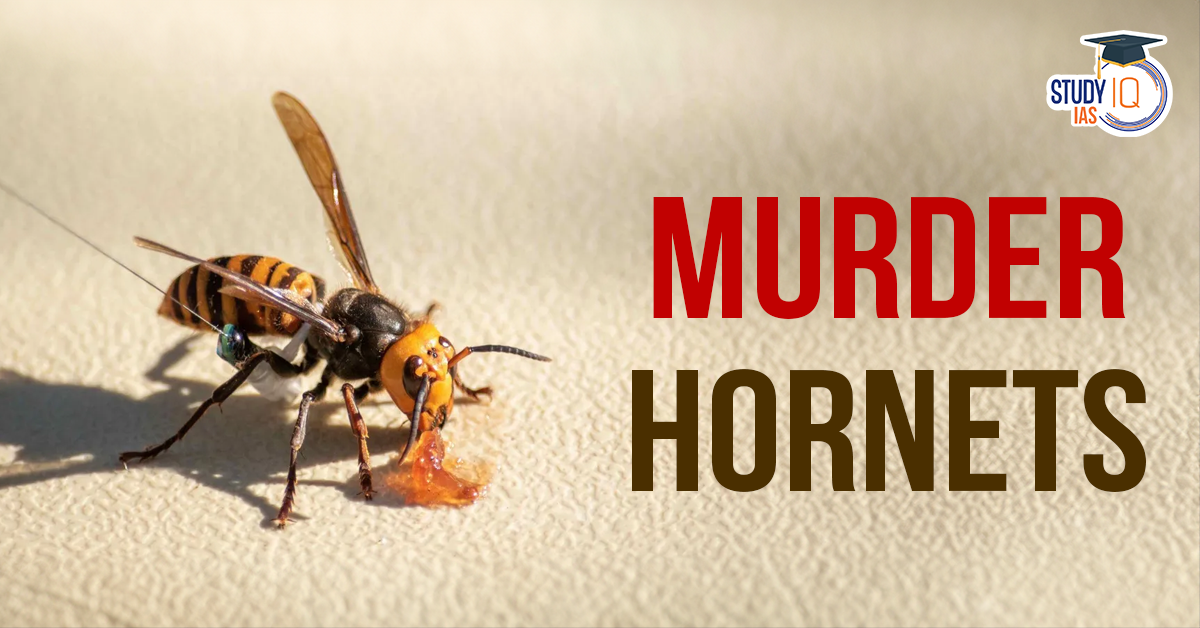Table of Contents
About Northern Giant Hornet
- It is the largest hornet species in the world.
- It is Native to subtropical and temperate mountainous regions of Asia, including northern India, the Korean peninsula and Japan.
Characteristics
- They are approximately 4 times the size of domestic honeybees.
- Appearance: Large orange head with prominent black eyes. Dark brown thorax and abdomen with yellow-orange bands.
- Builds underground nests, generally in abandoned rodent burrows.

Difference between Hornet & Wasp
- The major difference between wasp and hornets is size and colour. Wasps are smaller in size than Hornets.
- Wasps have black and yellow rings, while hornets have black and white rings.
Why Are ‘Murder Hornets’ a Threat?
- Impact on Pollinators:
- It is capable of destroying an entire honeybee hive in just 90 minutes.
- Hornets can enter a ‘slaughter phase’ where they kill entire hives by decapitating the bees. The hornets then defend the hive as their own, taking the brood to feed their own young
- Threatens native pollinators essential for agriculture and ecosystems.
- Human Danger:
- Their stings can penetrate beekeeper suits, delivering venom seven times more potent than a honeybee’s. They can sting multiple times, causing significant harm.
- Invasive Concerns: In non-native areas, the hornet can destabilize ecosystems by preying on native species. It competes with local predators for food resources.


 List of National Parks in India 2025, Ch...
List of National Parks in India 2025, Ch...
 Bonnet Macaques: Habitat, Features, Beha...
Bonnet Macaques: Habitat, Features, Beha...
 Periyar Tiger Reserve, Map, Flora, Fauna...
Periyar Tiger Reserve, Map, Flora, Fauna...

























